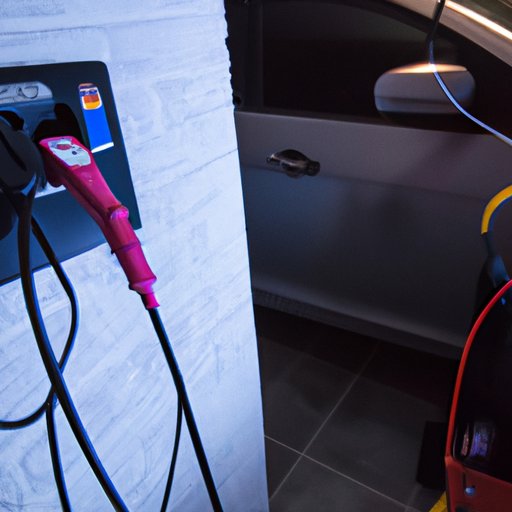Introduction
The increasing popularity of electric vehicles (EVs) has triggered a surge in demand for electric car charging infrastructure. Home-based EV charging is often the most convenient option for drivers, as it allows them to charge their vehicles quickly and easily. In this article, we will explore how to charge an electric car at home, including the different types of charging options, the necessary equipment and installation process, and the steps to take when connecting your EV to the charger.

Research Local Electric Car Charging Options
Before beginning the process of charging your electric car at home, it is important to research the different types of charging available in your area. Different regions may have different regulations, incentives, and access to different types of public and private charging stations. Understanding the local EV charging landscape can help you make an informed decision about the best charging option for your needs.
Install the Necessary Equipment for Electric Car Charging at Home
Once you have researched the local EV charging options, it is time to install the necessary equipment for electric car charging at home. The two main types of EV chargers are Level 1 and Level 2 chargers. Level 1 chargers are typically used for overnight charging and require a standard 120-volt outlet. Level 2 chargers are typically used for quicker charging and require a dedicated 240-volt circuit. Depending on the type of charger and the wiring requirements, it may be necessary to hire an electrician to install the necessary equipment.

Connect Your EV to the Charger and Begin Charging
After the EV charger has been installed, it is time to connect your EV to the charger and begin charging. Make sure to read and follow the manufacturer’s instructions for installing and connecting the charger. It is also important to ensure that the charger is properly connected before beginning the charging process.

Monitor the Charging Process and Adjust Settings as Needed
Once the EV is plugged into the charger, it is important to monitor the charging progress regularly. Some EVs have built-in charging monitors or apps that allow you to track the charging progress remotely. If needed, you can also adjust the settings on the charger to optimize the charging speed or reduce energy consumption.
Conclusion
Charging an electric car at home is a relatively straightforward process. By understanding the different types of charging available, researching local regulations, purchasing the necessary equipment, and following the instructions for installing and connecting the charger, you can safely and efficiently charge your electric vehicle at home. Always remember to monitor the charging process and adjust settings as needed to ensure optimal performance.
(Note: Is this article not meeting your expectations? Do you have knowledge or insights to share? Unlock new opportunities and expand your reach by joining our authors team. Click Registration to join us and share your expertise with our readers.)
